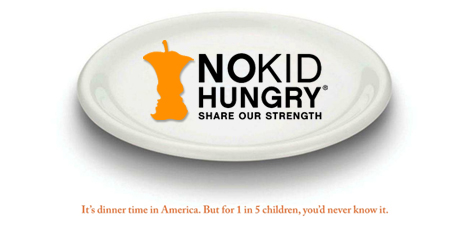The problem of childhood hunger is not simply a moral issue. Child hunger hampers a young person’s ability to learn and becomes more likely to suffer from poverty as an adult. Scientific evidence suggests that hungry children are less likely to become productive citizens.
Facts of Child Hunger in America
- Nearly 14 million children are estimated to be served by Feeding America, over 3 million of which are ages 5 and under.
- According to the USDA, over 16 million children lived in food insecure (low food security and very low food security) households in 2010.
- 20% or more of the child population in 40 states and D.C. lived in food insecure households in 2009. The District of Columbia (32.3%) and Oregon (29.2%) had the highest rates of children in households without consistent access to food.
- In 2009, the top five states with the highest rate of food insecure children under 18 are the District of Columbia, Oregon, Arizona, Arkansas, & Texas. iii
- In 2009, the top five states with the lowest rate of food insecure children under 18 are North Dakota, New Hampshire, Virginia, Maryland, & Massachusetts. iii
- Proper nutrition is vital to the growth and development of children. 62 percent of client households with children under the age of 18 reported participating in the National School Lunch Program, but only 14 percent reported having a child participate in a summer feeding program that provides free food when school is out.i
- 54 percent of client households with children under the age of 3 participated in the Special Supplemental Nutrition Program for Women, Infants, and Children (WIC).i
- 32 percent of pantries, 42 percent of kitchens, and 18 percent of shelters in the Feeding America network reported “many more children in the summer” being served by their programs.i
- In 2010, 16.4 million or approximately 22 percent of children in the U.S. lived in poverty.
- Research indicates that hungry children have do more poorly in school and have lower academic achievement because they are not well prepared for school and cannot concentrate.
- In fiscal year 2009, 48 percent of all SNAP participants were children
- During the 2010 federal fiscal year, 20.6 million low-income children received free or reduced-price meals through the National School Lunch Program. Unfortunately, just 2.3 million of these same income-eligible children participated in the Summer Food Service Program that same year.
Click here for more information. And for more information about the No Kid Hungry Program, click here.

